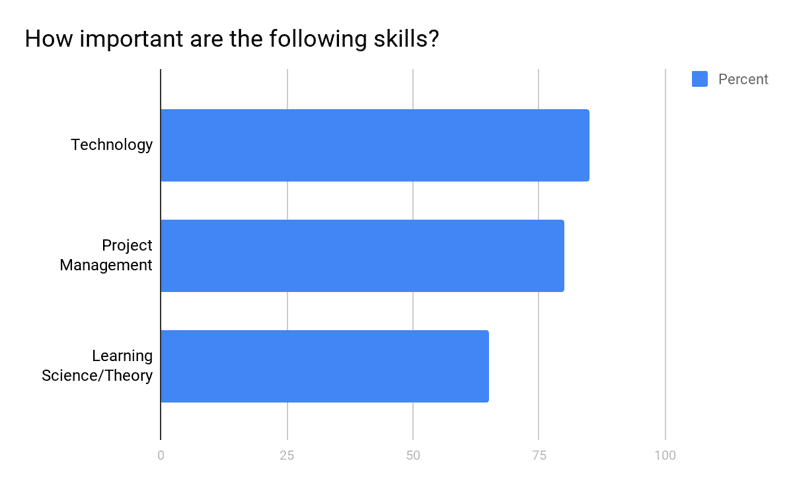Who are they?
Instructional design began during World War II with the need to train massive numbers of troops. A team of psychologists and educators were tasked to lead this effort. After the war, the field was shaped by important advances in learning theory by Bloom and others. More recently, information technology has completely transformed the higher education landscape.
Today’s instructional designers tend to hold advanced degrees from a range of disciplines. Intentional Futures surveyed 853 instructional designers working in higher ed and found that:
- 87% of respondents have masters’ degrees, and 32% have doctoral degrees.
- 87% of respondents have 3 to 11+ years in instructional design,
- 57% have 3 to 11+ years teaching in higher education, and
- 53% have 3 to 11+ years in technology development.
A PASS designers fit this same profile. Check out about our talented instructional designers in this handout.
What do they do?
The survey found that instructional designers divide their time between 4 key areas.
- Design – Author content. Design new or redesign old courses for online delivery. Provide quality assurance testing.
- Manage – Provide project management for teams working to develop and deploy online courses. Serve as advocate for online learning with faculty and administration.
- Train – Train faculty to leverage technology and apply pedagogy to online environment.
- Support – Assist faculty and staff to implement online courses.
A PASS designers have extensive experience providing these services.
Recent survey suggests that the role of the instructional designer is changing. Respondents reported spending more time on project management than anything else! Share on X
The Changing Role of Instructional Designers
The survey suggests that the role of the instructional designer is changing. Respondents reported spending more time on project management than anything else. More than 50 percent of designers reported engaging in project management multiple times a day, less than 25 percent reported spending this much time designing instruction. Moreover, the survey results suggest that the focus on project management increases as designers gain seniority.
Another change involves the recent focus on technology. Respondents spent more time training faculty on technology than in writing new courses. While this may not seem surprising in the internet era, it has not always been the case. In the past, designers spent the lion’s share of their time creating content or conducting research.
What skills do they need?
Respondents ranked learning new technologies as the most important skill needed for success in their current roles. Project management and learning science/theory were ranked second and third, respectively. Entry level designers emphasized learning new technology. Senior level designers put more emphasis on learning theory and project management.

Source: Instructional Design in Higher Education Report 2016
Survey participants chose obtaining faculty buy-in as their biggest challenge. Deans and curriculum managers should keep this in mind as they move toward developing more online course offerings.




